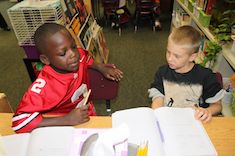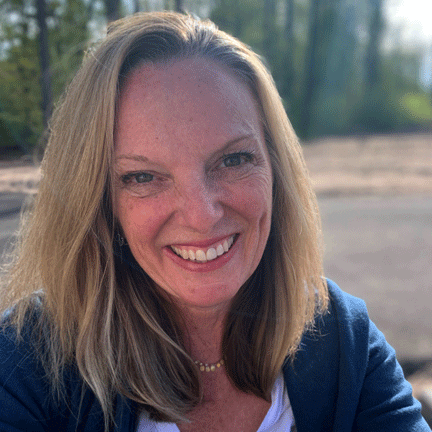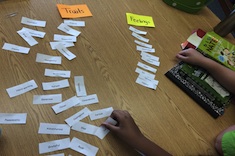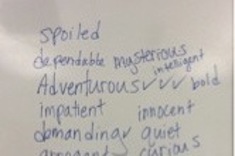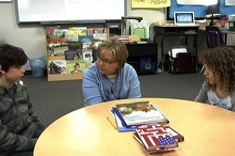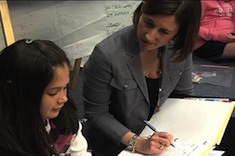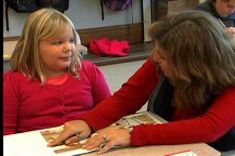Our sixth graders are getting ready to write realistic fiction stories, and one of the important parts of the process is getting to know their characters. In the past, I have taught this in different ways:
- Drawing pictures or portraits of characters. I can differentiate this across ages and stages by nudging students to label or provide explanations of key features.
- Filling out questionnaires about their characters, providing intimate details that answer questions that we’ve all brainstormed together such as these:
- What is your character’s favorite book and why?
- What are they afraid of?
- What is their favorite piece of clothing and why?
I have also shared two activities as icebreakers for creating more interesting characters in fiction writing. I call one Meet _______ and the other Mingle, Mingle. Both have worked beautifully with third through sixth graders, and I’m sure they would work with older students as well.
For Meet ________, students write about their character in an introductory kind of way. I teach them the importance of knowing and understanding their characters as authors, and I model free-writing to learn about my character.
As students write, I give them cues that they can take or leave: Siblings? Pets? Times they bled? (Most students love that one!) Their pencils start moving quickly.
Mingle, Mingle involves students pairing up and then playing the part of their character, asking and answering questions.
Yesterday, I gave a quick lesson about the importance of knowing characters and told students about the Meet _____ strategy. I modeled for them, and had them notice my process.
“You wrote really fast.”
“You didn’t really know what you were going to write.”
“You actually have a couple of little stories in there.”
Exactly! I underlined a couple of the potential stories I could write just because I’d taken the time to free-write and know my character. Nope, I didn’t know she had a blind friend until I got going. I also hadn’t thought about goats and her experiences with them. All of this took 10 minutes, and by the end of that, students were ready to write. Not everyone filled the same amount of paper, but even the striving writers wrote about their characters.
Just as the energy waned and a few kids began to shake their heads, I introduced the idea of Mingle, Mingle. Some didn’t want to stop writing, but when they heard about the next way to get to know their characters, they were more excited.
They would get together with another person, and I would reveal a topic for discussion. One person would pretend to be their character and answer. The other person’s job was to listen hard and ask questions.
We started with a conversation about their house.
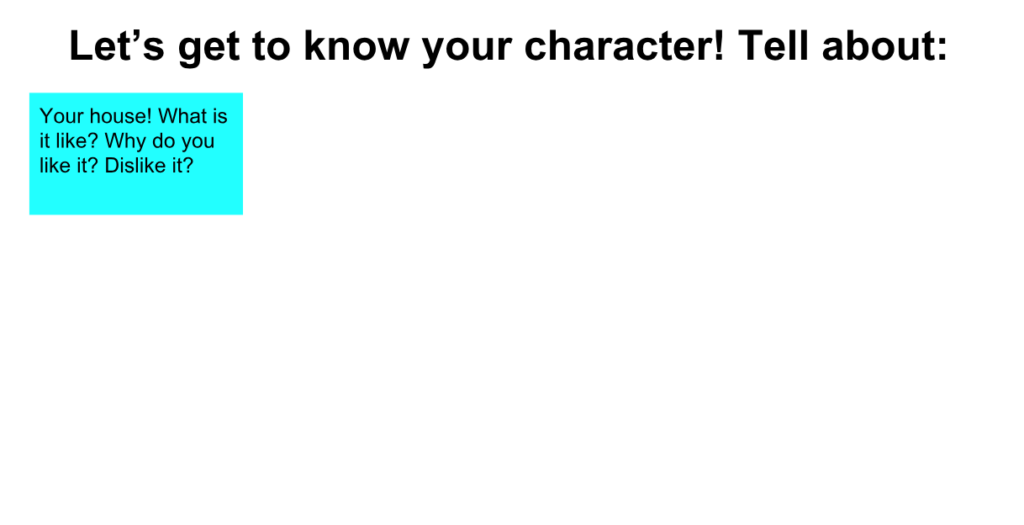
Listening in on the conversations, I was reminded of the importance of thinking for a moment before talking, and I had them pause. “Take 20 seconds,” I said. “Think about and plan what you’re going to say about your house.” The conversations improved, and their classroom teacher and I could coach into both the telling and the asking questions before having the partnerships switch roles.
After the discussion about houses, I had students go to someone different. “Mingle, mingle,” I said. “As soon as you are with someone you haven’t been with before, be quiet, and I will put up the next question.”
We did this for a few more questions, and the conversations got better and better.
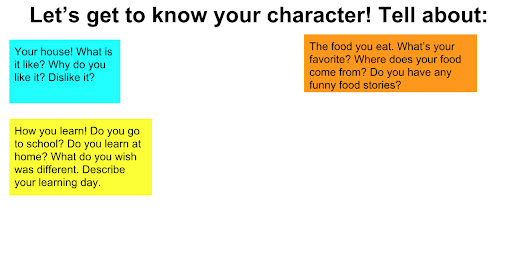
Then we had students return to their writing about their character. With that much more knowledge about their characters, they wrote and wrote. As the adults in the room, our role was really to just laugh, gasp, or affirm some of what they were writing. After about 10 minutes, we asked them to finish their sentence, circle any stories they were finding, and get ready for a few more rounds of mingling. When students won’t stop writing, you know it’s working, and these students would not stop writing.
Having the questions as a Google Slides presentation allowed me to fade them in one at a time. I have shared this presentation, so if you want to use the one I made, you are welcome to—just make yourself a copy if you want to change anything. https://docs.google.com/presentation/d/1BuTuTYceRxVWbYg_7CAl3BuKKF13e95IibEdDPZMSq8/edit?usp=sharing
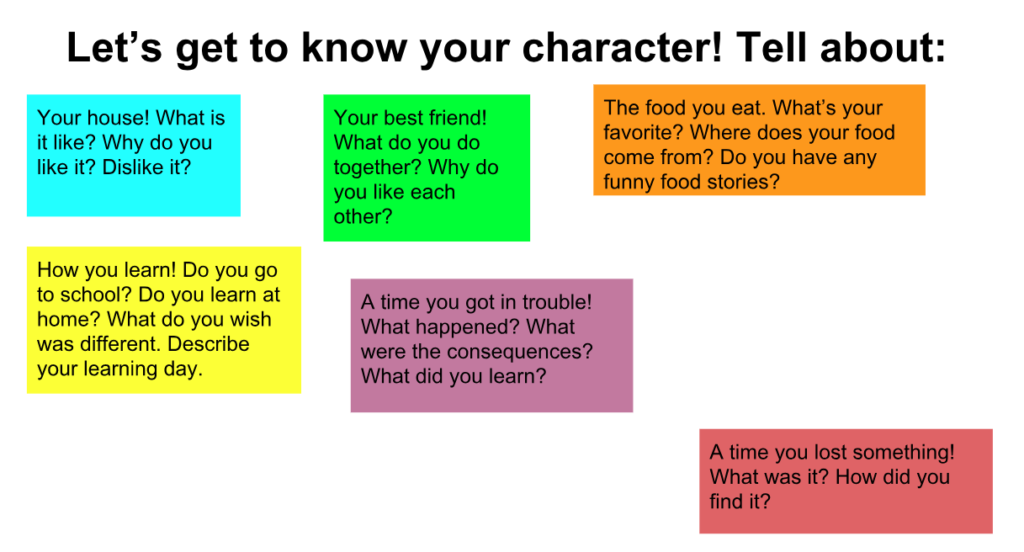
Students continued to mingle with different people, thinking about different aspects of their character.
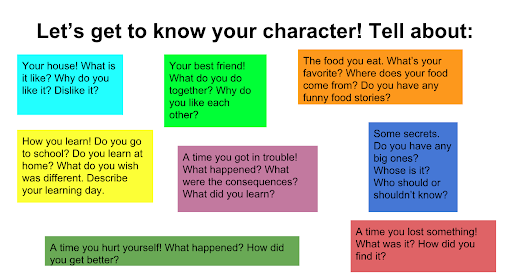
And then, guess what? They returned to their writing. Students had a lot to say about their characters, and they couldn’t wait to decide on and plan a story.

